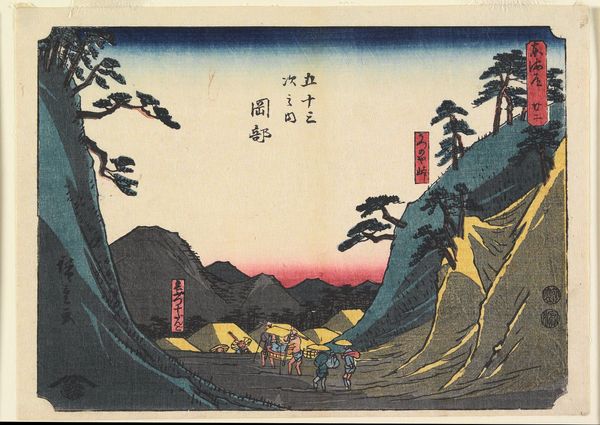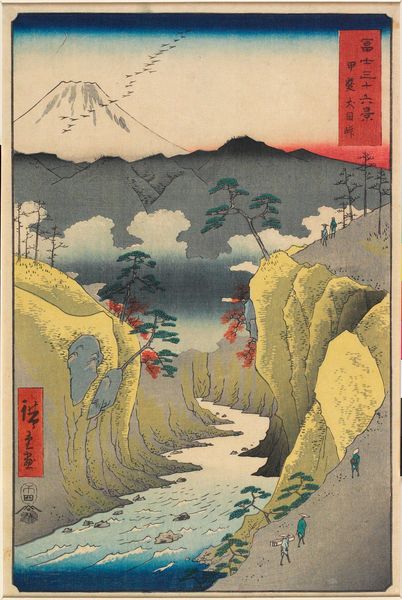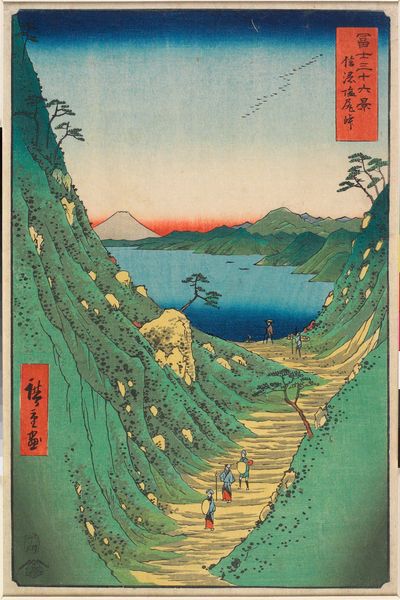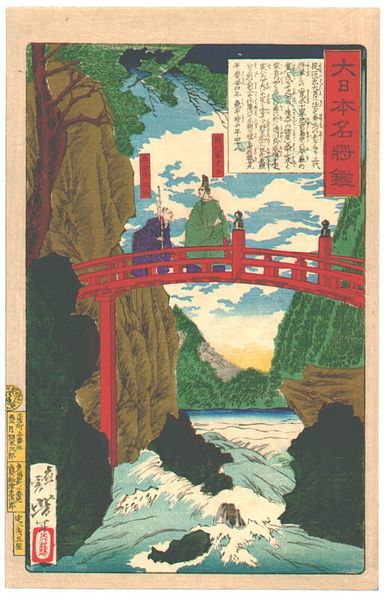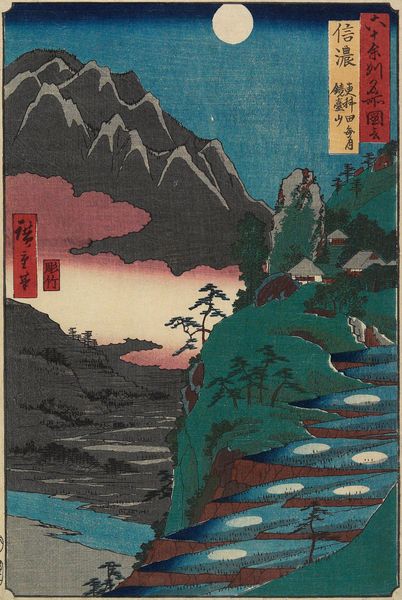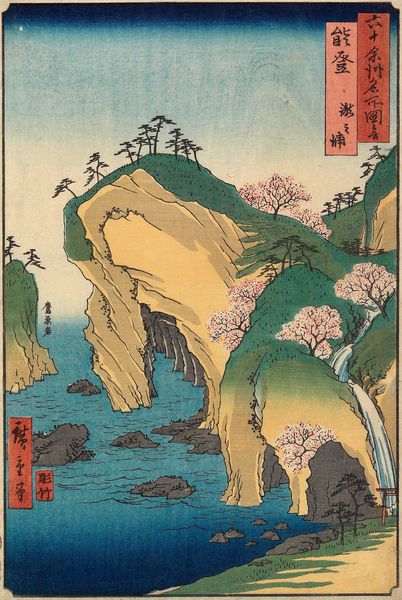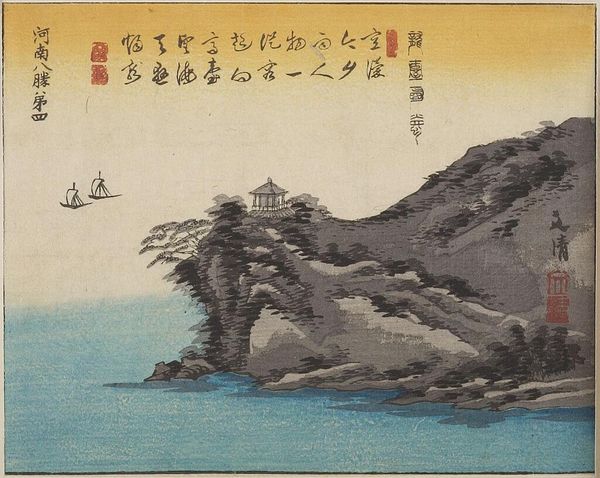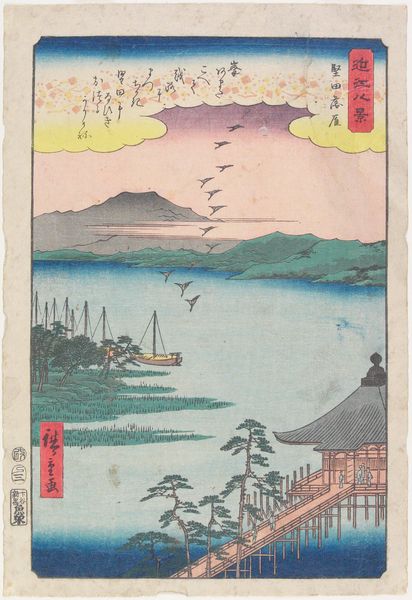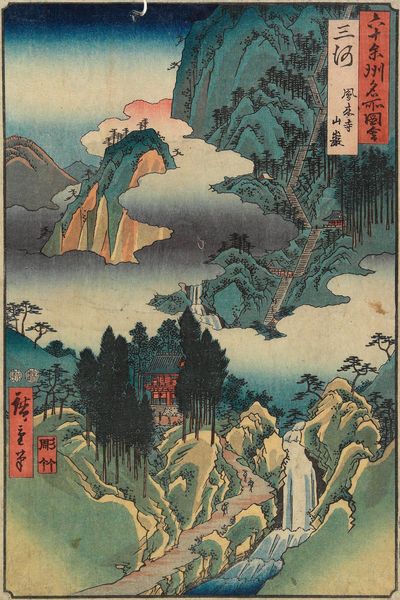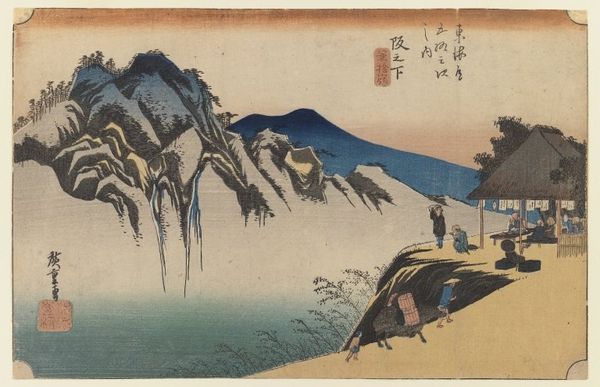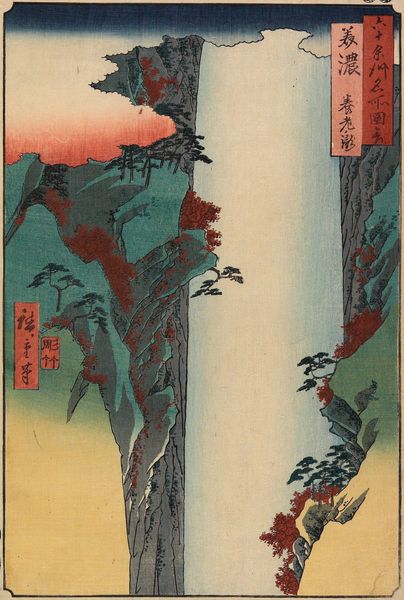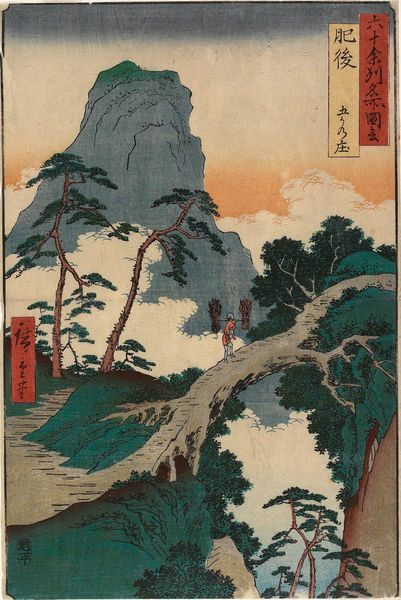
print, ink, color-on-paper
#
toned paper
#
water colours
# print
#
japan
#
personal sketchbook
#
ink
#
color-on-paper
#
coloured pencil
#
ink colored
#
sketchbook drawing
#
watercolour bleed
#
watercolour illustration
#
sketchbook art
#
watercolor
Dimensions: 7 1/16 x 4 1/2 in. (18 x 11.5 cm) (image, sheet)
Copyright: Public Domain
Curator: Here we have Utagawa Hiroshige's "(Bridge in a Gorge)" from 1831, currently residing at the Minneapolis Institute of Art. It is a color print employing both ink and watercolor on paper. Editor: It's diminutive scale creates an intimate world. The soft palette of muted blues, pinks, and greens feels both dreamlike and nostalgic. Curator: Precisely. Hiroshige masterfully uses the conventions of ukiyo-e to play with depth. Note the bridge itself—its structure leading the eye into the gorge—juxtaposed against the immensity of the landscape. There's a sophisticated interplay between linear perspective and flatness here. Editor: What strikes me is the texture imbued by the medium itself. The watercolour bleed is palpable, giving the sense of a handmade object laboriously constructed. Consider, also, the cultural function of prints during this period, accessible for mass distribution and consumption as compared to individual drawings only attainable for wealthy patrons. Curator: Indeed, prints allowed artists to disseminate their vision more widely, shaping aesthetic sensibilities, yet within that seemingly democratic process, there's a calculated manipulation of spatial depth through carefully placed color blocks. The eye is guided purposefully; the gorge itself becomes an abstracted study in light and shadow. The overall composition becomes more than just a representation of place, rather a harmonious interplay of forms. Editor: Though the 'harmonious interplay of forms' depended not just on the artist, but the woodblock carvers and printers toiling under strict conditions to reproduce the initial drawing faithfully for mass production. Their unseen labor is part of this cultural product. Let's consider, further, how images like these perpetuated ideas of idealised landscapes, often reinforcing imperial and economic power structures by framing regions as resources ripe for extraction. Curator: Perhaps. But focusing on the immediate impact, what we see is a scene imbued with serenity through artful rendering. The arrangement of mountains, the placement of foliage, and the structural components creates an immediate contemplative experience through formal unity. Editor: True, it’s tempting to see that surface, but the artwork reminds us of the layers of making beneath any landscape, the human costs, even within seemingly harmonious imagery. Curator: It does give one pause for thought. Thank you for that observation. Editor: My pleasure. I see such beauty even in questioning it.
Comments
No comments
Be the first to comment and join the conversation on the ultimate creative platform.
